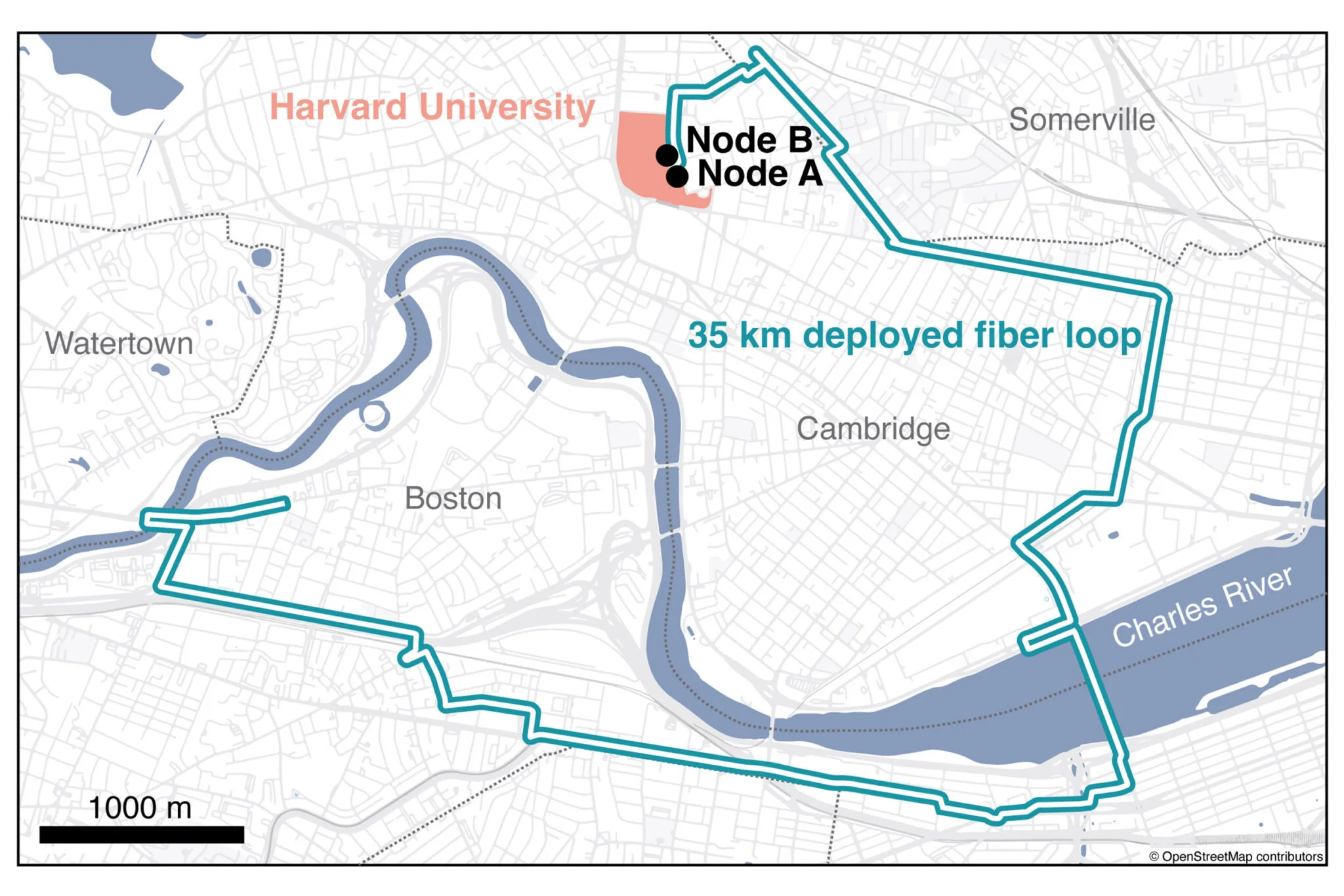A quantum internet would essentially be unhackable. In the future, sensitive information—financial or national security data, for instance, as opposed to memes and cat pictures—would travel through such a network in parallel to a more traditional internet.
Of course, building and scaling systems for quantum communications is no easy task. Scientists have been steadily chipping away at the problem for years. A Harvard team recently took another noteworthy step in the right direction. In a paper published this week in Nature, the team says they’ve sent entangled photons between two quantum memory nodes 22 miles (35 kilometers) apart on existing fiber optic infrastructure under the busy streets of Boston.
“Showing that quantum network nodes can be entangled in the real-world environment of a very busy urban area is an important step toward practical networking between quantum computers,” Mikhail Lukin, who led the project and is a physics professor at Harvard, said in a press release.

One way a quantum network can transmit information is by using entanglement, a quantum property where two particles, likely photons in this case, are linked so a change in the state of one tells us about the state of the other. If the sender and receiver of information each have one of a pair of entangled photons, they can securely transmit data using them. This means quantum communications will rely on generating enormous numbers of entangled photons and reliably sending them to far-off destinations.
Scientists have sent entangled particles long distances over fiber optic cables before, but to make a quantum internet work, particles will need to travel hundreds or thousands of miles. Because cables tend to absorb photons over such distances, the information will be lost—unless it can be periodically refreshed.
Enter quantum repeaters.
You can think of a repeater as a kind of internet gas station. Information passing through long stretches of fiber optic cables naturally degrades. A repeater refreshes that information at regular intervals, strengthening the signal and maintaining its fidelity. A quantum repeater is the same thing, only it also preserves entanglement.
That scientists have yet to build a quantum repeater is one reason we’re still a ways off from a working quantum internet at scale. Which is where the Harvard study comes in.
The team of researchers from Harvard and Amazon Web Services (AWS) have been working on quantum memory nodes. Each node houses a piece of diamond with an atom-sized hole, or silicon-vacancy center, containing two qubits: one for storage, one for communication. The nodes are basically small quantum computers, operating at near absolute zero, that can receive, record, and transmit quantum information. The Boston experiment, according to the team, is the longest distance anyone has sent information between such devices and a big step towards a quantum repeater.
“Our experiment really put us in a position where we’re really close to working on a quantum repeater demonstration,” Can Knaut, a Harvard graduate student in Lukin’s lab, told New Scientist.
Next steps include expanding the system to include multiple nodes.
Along those lines, a separate group in China, using a different technique for quantum memory involving clouds of rubidium atoms, recently said they’d linked three nodes 6 miles (10 kilometers) apart. The same group, led by Xiao-Hui Bao at the University of Science and Technology of China, had previously entangled memory nodes 13.6 miles (22 kilometers) apart.
It’ll take a lot more work to make the technology practical. Researchers need to increase the rate at which their machines entangle photons, for example. But as each new piece falls into place, the prospect of unhackable communications gets a bit closer.



